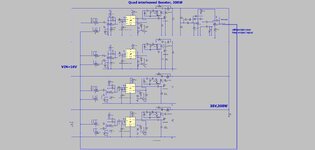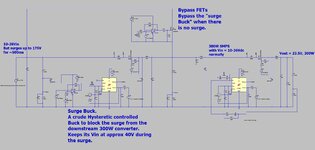cupoftea
Advanced Member level 6

Hi,
We are doing a Full Bridge, 10-36vin, 32vout, 300wout, 125kHz.
The input will see surges to MIL-STD-1275E and also DEF STAN 61-005 Part 6.
The LTC4364 is the beefiest of all offTheShelf surge protectors, but isnt capable of handling these standards' surges. Do you know of any that do, or are we looking at a home brew circuit only?
LTC4364
MIL-STD-1275E
DEF STAN 61-005 Part 6
We are doing a Full Bridge, 10-36vin, 32vout, 300wout, 125kHz.
The input will see surges to MIL-STD-1275E and also DEF STAN 61-005 Part 6.
The LTC4364 is the beefiest of all offTheShelf surge protectors, but isnt capable of handling these standards' surges. Do you know of any that do, or are we looking at a home brew circuit only?
LTC4364
MIL-STD-1275E
DEF STAN 61-005 Part 6




